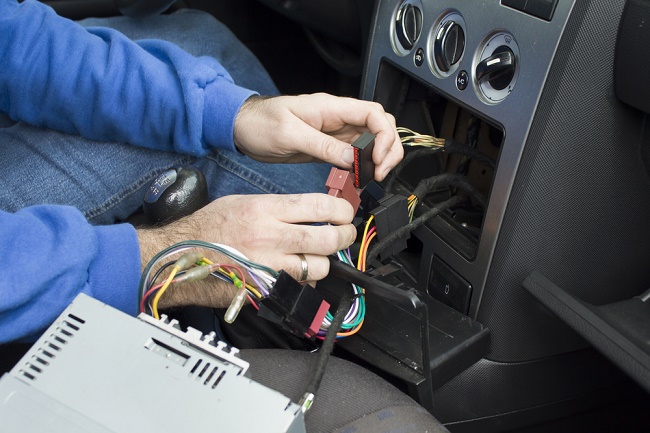If you’re interested in playing around with your car’s wiring system so that you can learn how the basics work, then you’ve come to the right place. I’ll talk about the very basics of auto electrics, and if most of this is too obvious for you, then you’re probably better off elsewhere reading more advanced guides. Otherwise, stick around and we’ll get right into it.
As you already know, electronics can be dangerous if they aren’t handled with care. The source of electricity in most cars is, of course, the battery. Most modern vehicles use a 12V battery, meaning that most items inside the car are also designed to function on 12V. Batteries feature two terminals, a negative and a positive, and they work the same way as the batteries we use for powering our devices, except they’re larger and more powerful.

The power of the battery is carried out to the electrical items through the car wiring system, which is comprised of strands of copper wrapped inside a coloured sleeve. Car wiring systems are comprised of hundreds, if not thousands of different wires, many of which are bundled together into specific groups. All of the electricity that flows through the wire does so following a pre-determined path known as a “circuit”, and the flow of electricity is known as “current”.
In order to reduce the number of cables and wires needed, car manufacturers take advantage of the fact that cars are made of metal, and they use its body as a terminal. The process of connecting the terminal to the vehicle is known as “earthing” or “grounding”. Most of the time, the negative terminal is grounded, but that’s not always the case, so make sure to check your specific vehicle. Additionally, some vehicles feature fiberglass bodywork, so this process isn’t acceptable.
All cars feature fuse boxes that house a wide range of fuses of different values. Fuses are an important safety feature, and their purpose is to allow only a specific amount of current through them. This is because an unwanted electric current can be extremely unsafe and can cause a lot of damage to the car’s electric system. Think of them as doorways – a narrow doorway allows a couple of people through easily, but if a lot of people attempt to force their way through that will overload the doorway and it can completely collapse and prevent others from going through it. It is as simple as that.


